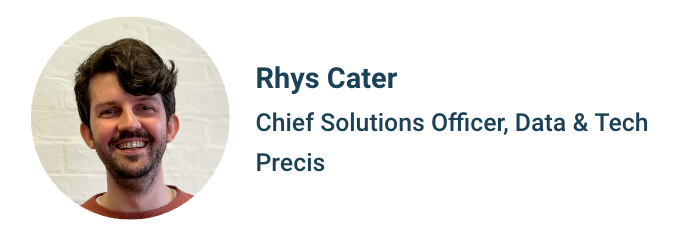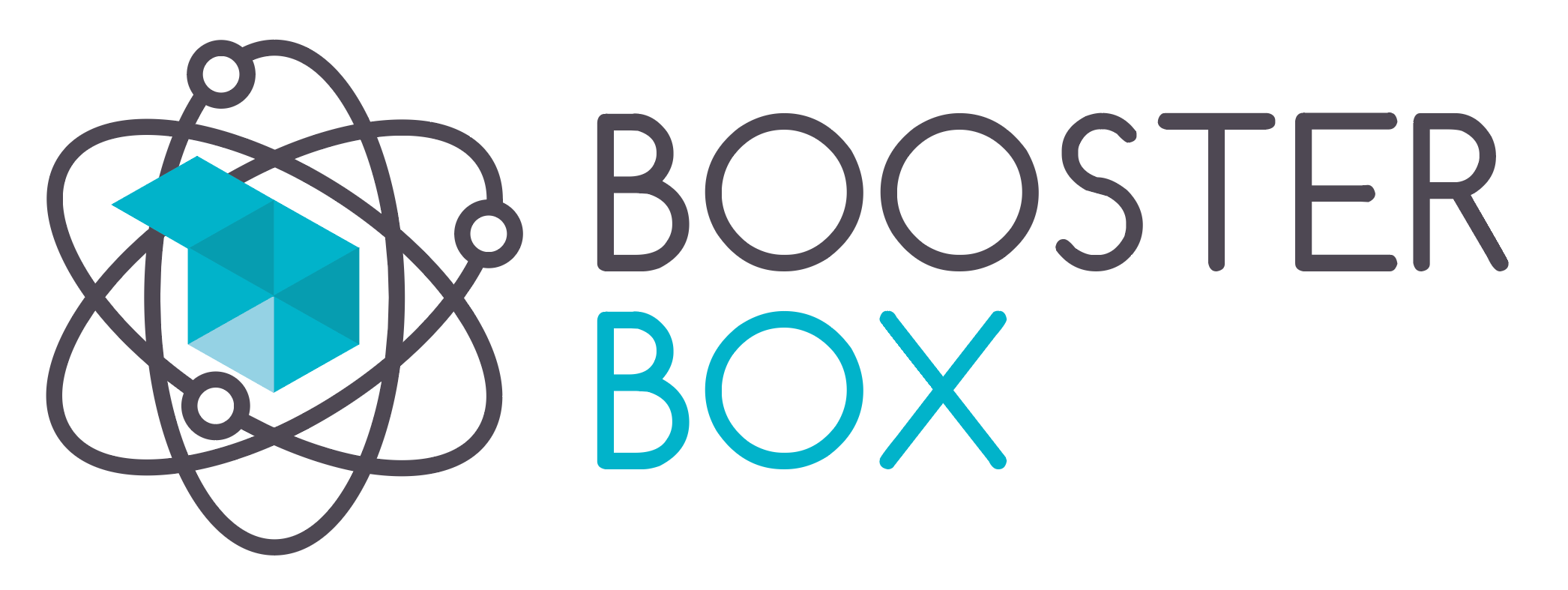Introduction
Welcome back, digital enthusiasts! Today, we’re diving into the future of media buying with a spotlight on Generative AI. To shed light on this topic, we’ve roped in the ever-insightful Rhys Cater, our Group Solutions Officer for Data and Tech at the Precis Group, to which we proudly belong.

Rhys is undoubtedly our go-to-person to understand the future of media buying with generative AI, so we couldn’t help but pick his brain about it. So, grab your cup (we suggest a piping hot, single espresso at the drop – but you do you), sit back, and enjoy this blend of insightful dialogue!

Q1: Rhys, let’s start with the basics. How is Generative AI different from other AI technologies we’ve seen so far?
Rhys: Since I’m talking with Italians, let’s go with a comparison that’s close to your heart and talk about coffee!
Generative AI is like that barista who knows exactly how you like your coffee, but instead of just serving you, it can also come up with new and exciting flavours you didn’t even know you wanted. Traditional AI and automation tools will mostly give you the answer that you asked for, and nothing more. Generative AI, on the other hand, creates new content – be it text, images, or even music – by learning from patterns and then innovating. It’s the difference between following a recipe and being a chef.
Q2: Fascinating! Coffee, recipes, chefs – you know who you’re dealing with, don’t you? 😏 (ed: he laughed). Back to business, how do you see Generative AI revolutionising media buying specifically?
Rhys: Picture this: a world where technology doesn’t just allow you to automate, but where it can truly augment human insight and creativity. In the media space where we deal with huge amounts of data, creative, and variables, the potential is big.
Generative AI can analyse vast amounts of data and generate media plans that are not only efficient but also tailored to specific industry or audience nuances. At Precis, we’ve integrated Generative AI into our tech platform (ed: it’s called Alvie, but this is another story for another time, hold your horses fam), which helps us with interactive data exploration and provides expert-level recommendations. This means our teams spend less time on mundane, repetitive tasks and more on strategic thinking and innovation.
Q3: We’d like to ask you a bit more about that tech platform. Our readers might want to get the beans spilled, but we’ll keep it for another time (sorry, reader). What about the quality of AI-generated content? Can it really match human creativity?
Rhys: This is the million dollar question. Generative AI is a powerful tool, but like any tool, its effectiveness depends on how you use it.
I can throw out some case studies, like a 50% increase in efficiency in our work in SEO for one client, but the reality is that human oversight is crucial and those efficiency gains are only valuable if we also maintain quality and innovation. AI can draft and create, but it’s our job to guide, refine and ensure the content aligns with our brand’s voice and strategy. Think of it as having an assistant who is excellent at brainstorming but who still needs your creative touch and mentorship to come up with a finished product.
Q4: Thanks for reassuring our copywriters Rhys, much appreciated. You made yourself a few allies at a stroke. So this opens up another question: there’s a lot of buzz about AI taking over jobs. What’s your take on this?
Rhys: The fear isn’t unfounded, but it’s also a bit exaggerated.
AI, including Generative AI, is more about augmentation than replacement. It takes over repetitive, process-driven tasks, freeing up human talent for higher-value work. This shift allows our team members to focus on learning and career development. In essence, AI is transforming roles rather than eliminating them. McKinsey Digital shared insights on this topic in this recent article I recommend. TLDR: you still need human capabilities to outcompete in the age of digital and AI, it’s still early days and there’s so much to learn.
Q5: Thanks for the TLDR, Rhys! Now, moving on, what specific challenges should companies be aware of when integrating Generative AI?
Rhys: There are a lot of challenges for companies to navigate! But where there are many challenges, there are also opportunities.
First off, quality control is paramount. AI can “hallucinate” and generate inaccurate outputs, so human supervision is a must. Secondly, legal concerns around copyright and data privacy can’t be ignored. Companies need to develop their own ethical guidelines and ensure all teams – from legal to marketing – are aligned. Lastly, fostering a culture that embraces change and innovation is crucial. Change can be daunting, but with the right vision and engagement, it can be an exciting journey. With all of these ingredients in place, companies create the foundations for success and advantage with new tech.
Q6: Can you give us more specific examples of how Generative AI is being used nowadays in media buying and planning?
Rhys: Absolutely. We have so many already happening all across Precis and Booster Box!
In our creative team, we’re using Adobe Firefly and Midjourney to speed up the concepting and production processes. In optimisation, we’re using AI to generate faster insights about ad and creative performance. And in our operations, we’ve used AI to massively improve product feeds which boosts performance in a fraction of the time that it would take humans to do the same job.
With Generative AI, the opportunity is huge and the only limit is your imagination. There’s no excuse not to find ways to innovate and improve the planning and buying process from end to end.
Q7: To conclude, an easy question: What does the future hold for Generative AI in media buying? (We know it’s everything but easy, but we’ve got a witty DNA. What jokers 🤡)
Rhys: The easy answer: the sky’s the limit! But more seriously, as the technology evolves, so will its applications, and it’s very difficult to see the future when we couldn’t even have imagined this level of sophistication just a couple of years ago.
My prediction is that we’ll see AI baked into more and more of the tools we use every day, from Google Ads through to creative production. This will have two effects: firstly, an explosion of new functionality and power within digital advertising platforms. Secondly: a paradigm shift in the skills that advertisers and agencies need to be successful. Knowledge is at less of a premium when every answer is just a prompt away, but the real value will come from companies and agencies who are able to think strategically and, most importantly, apply technology in an innovative and business-specific way to create impact!
Generative AI isn’t just a tool, it’s a catalyst for a more innovative, efficient, and creative future in media buying.
Q8: Surprise surprise, there’s one last question. If you had to pick a couple of key takeaways from your experience with media buying with generative AI, what would they be?
Rhys:
I’ve got a couple of high-level thoughts to share with you all on your first steps with media buying with Generative AI:
- It’s not the tech, it’s what you do with it that counts
Technology itself isn’t the endgame. It’s about leveraging Generative AI to drive strategic outcomes. This means integrating AI in ways that enhance our workflows and align with our business goals. - Find the low hanging fruit of workflows that can be faster and more efficient with GenAI
Start by identifying simple, repetitive tasks that AI can handle. This frees up time for more strategic activities. Things will get complicated at a later stage, no need to anticipate it at the very beginning.
Thanks, Rhys!

There you have it, folks! A glimpse into the future of media buying with Generative AI, straight from the expert himself, Rhys Cater. As AI continues to evolve, so too will our strategies and capabilities. Stay tuned for more insights and keep innovating!

